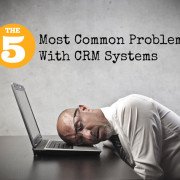Why Manual Deal Tracking in Salesforce is Holding You Back

In today’s data-driven sales world, every sales decision revolves around numbers, from lead nurturing to deal closure. If you are wondering why, there is no rocket science behind it. All you need is accurate data that cuts through guesswork and provides clarity to the sales team in the long run and what might not.
With never-ending data in the sales ops, from call logs and emails to dealing with closures and client feedback, it is a challenge to keep up with the market competition. Despite using modern sales CRM tools like Salesforce, HubSpot CRM, Zoho CRM, Pipedrive, Microsoft Dynamics 365, Zendesk Sell, and monday CRM, etc. This is because the sales reps struggle to effectively manage this continuous data generation as their time often gets consumed with manual Salesforce deals tracking.
Manual Data Entry Challenges in Salesforce and Their Impact on Sales Success
If you think manual data entry in Salesforce isn’t that bad? Think again. Manually handling this sheer volume of customer data can introduce error risk, which can disrupt accurate reporting and complicate the overall sales metrics to track. In layman’s terms, to make the most out of your Salesforce deals, you need to understand the sales story behind your organization’s sales deal tracking journey. This will help the sales reps to smoothly turn their raw data into actionable insights to anticipate, plan, and take advantage of current and upcoming sales opportunities.
Customer data is the backbone for any sales deal, and even the minutest error in your data wouldn’t just slow the sales process. This could create a huge, disjointed gap in the sales metrics to track, and this challenge is just the beginning. If not rectified in the earlier stage, the next step of manual data analysis further accelerates your sales issues by providing limited insights. This results in difficulty in uncovering valuable opportunities within the data. This will further impact customer response times with unreliable sales metrics to track decreasing productivity and misses salesforce deals revenue opportunities.
In a nutshell, this manual sales data entry journey will heighten the customer churn rate and lead to missed Salesforce deal opportunities. This is the biggest indicator that the Salesforce Journey heavily depends on the quality of your CRM data.
According to a recent Affinity survey, “65% of sales managers believe poor quality outreach is due to missing context from previous interactions.”
That is why bulletproof deal tracking software will not only enrich your salesforce deals but also equip your sales team with all the essential tools. These will instantly heighten your sales productivity with a smooth sales pipeline tracker, resulting in an ample number of closed deals.
Through this guide, we will discuss how manual Salesforce deals tracking can be tiring and time-consuming for your sales team. After which we will quickly go through the checklist of iSEEit methodology to automate your entire sales journey to keep your Salesforce CRM clean and free your sales team from manual data entry.
But first, let’s go through the basics.
What is Sales Tracking and Why is it Important?
In any sales org, the traditional sales tracker strategy involves collecting, analyzing, and reporting sales data to identify the market gaps and improve performance efficiency. This helps understand how effectively your sales team can meet their deal-tracking goals to make data-driven decisions so they can focus on closing more deals.
If you are a sales organization that is looking for ways to close more high-quality sales deals, then your groundwork starts with having good sales tracking strategies. It’s not just about gathering all the raw data available but using the right data at the right time. With the right sales metrics to track, sales leaders can focus on overall sales performance and will get a bird’s-eye view of Salesforce deals, trends, and behaviors. This helps you analyze your monthly/yearly sales cycles so organizations can identify the sales gaps or determine where your reps are wasting their time.
Whether you’re a small business or a multinational company, a proper sales lead tracking system ensures that you:
- Identify sales gaps.
- Optimize reps’ time.
- Automate repetitive tasks.
- Sharpen sales training and approaches.
In short, sales tracking sets the foundation for data-driven analysis for proactive actions. For instance, if your sales reps are smashing their data profiling but not making enough calls, it might be because they’re focusing more on data extraction, which takes up their entire time. This sales gap is the pain point your company is currently facing that needs to be addressed. And this is just one of many challenges that the sales reps face where deal tracking works as a lifesaver. If your sales tracking game is on point, you can use it to sharpen your sales approaches and training.
The Gaps in Manual Salesforce Sales Tracking and How iSEEit Closes Them
With a manual sales pipeline tracker like Salesforce, reps are so busy importing those numbers that most of the time they completely skip the part that really matters: selling. But the honest truth is, it’s slowing your sales team down more than you are aware of. Here are the critical gaps sales teams face and how iSEEit bridges them to ensure your sales tracking is on point as well as easy to manage and interpret.
1. Data Entry Overload → Guided, Automated Sales Qualification
The Gap: Sales reps spend hours logging emails, updating opportunity stages, or inputting call notes manually, which increases the risk of errors and data decay.
iSEEit Fixes It: With embedded sales methodology like MEDDIC and automated prompts, iSEEit collects and updates deal insights natively inside Salesforce without duplicating work. This helps sales reps focus all their energy on selling and not on manual data wrangling.
2. Missed Sales Insights → Visual, Evidence-Based Forecasting
The Gap: Manual sales tracking is not a fun part and mostly leads to vague, reactive reporting. Deal tracking is more than just following a checklist; it’s a minor pipeline blind spot that makes it challenging to forecast deal closures accurately.
iSEEit Fixes It: It offers visual deal reviews, automatic gap identification, and evidence-based forecasts that uncover hidden patterns on what’s missing. This assists in continually refining your sales approach before your sales metrics track results in lost revenue.
3. Disconnected Conversations → Role-Based Relationship Mapping
The Gap: Salesforce might track contacts, but it doesn’t reflect who really influences the Salesforce deals or if you’re talking to the right point of contact.
iSEEit Fixes It: With a built-in relationship mapping tool, iSEEit helps sales reps visualize the buying circle to understand each stakeholder’s roles. This helps the sales team align their sales efforts with decision-makers to be more efficient and improve their target bottom line.
4. Static Sales Playbooks → Integrated, Real-Time Sales Guidance
The Gap: Sales playbooks often live in Excel, PDFs, or shared drives disconnected from actual deal flow, which results in high deal drop-off.
iSEEit Fixes It: Sales teams get in-app access to sales playbooks and tutorials, customizable to each deal stage, guiding the reps at every turn with actionable insights to drive data-driven results.
5. Inconsistent Qualification → Configurable, Standardized Sales Processes
The Gap: Reps interpret stages differently, leading to inconsistent qualification, which is a clear indicator that your sales lead tracking system will end up attracting the wrong kinds of leads.
iSEEit Fixes It: Standardizes qualification with configurable checklists, scorecards, and embedded coaching that aligns teams to a unified, proven process. This immediately reduces slip-throughs and increases win rates, helping you align deal-tracking strategies with a broader perspective.
6. Lack of Accountability → Transparent, Trackable Deal Health
The Gap: Sales managers usually rely on guesswork to understand which deals are healthy or at risk. This is an inconsistent deal-tracking strategy to track daily sales and customer foot traffic patterns.
iSEEit Fixes It: Visual indicators and real-time deal health scores make accountability crystal clear on how and who was responsible for turning a lead into a customer. This keeps managers aware of the nitty-gritty of the entire sales process to know where to intervene and where to lower down.
The Hidden Cost of Manual Deal Tracking in Salesforce Nobody Talks About;
Manual deal tracking might seem harmless at first in Salesforce. Just a few clicks here, a note here. But in the long run the hidden costs start stacking up, which might seem like a fair amount in the beginning. But this is just the beginning, as your sales reps will get frustrated by the time wasted on repetitive admin tasks and overly clunky processes, which can be a nightmare over overtime. Moreover, there is no strategic planning to gauge the length of your sales cycles, which ends up in inaccurate forecasts that lead to missed targets.
Sales teams today don’t just need to log data; they need to powerfully accelerate like iSEEit to leverage to improve customer retention and profit margins while reducing the sales cycles. Every moment spent on non-selling tasks is a moment lost to your competition. The only solution is an automated sales lead tracking system like iSEEit that embeds sales methodology directly into your CRM.
“Manual deal tracking is like trying to run a race while carrying bricks. Yes, you will move, but not at the right pace that you require to win.”
Real-World Impact: What Manual Tracking Really Costs You.
If you’re still relying on your reps to update Salesforce manually, here’s what’s likely happening in your organization and how it’s directly or indirectly hurting your numbers:
- Low Data Accuracy, which results in poor forecasts and a complete waste of marketing budgets.
- Sales Rep Burnout while spending more time typing than talking to hot opportunities that can turn into prospects
- Misaligned Deal Tracking Forecasting results in decision-makers taking decisions based on outdated information.
- Low Pipeline Visibility results in missed deals, misjudged risks, and loss of competitive edge.
In the most layman terms, manual deal tracking isn’t just a minor inconvenience; it will quickly turn into a major growth blocker if not handled properly.
Transform Your Manual Sales Tracking Burden with iSEEit
Imagine if the Salesforce CRM could guide your sales reps through deals without them even thinking about data entry. This is where iSEEit takes the center stage with any sales lead tracking system by turning their passive database entry style into an active sales coach:
- Automatically logs important actions.
- Highlights risks and gaps in deals.
- Keep reps aligned with your sales methodology.
- Gives managers instant visibility into deal health and team performance.
This immediately results in fewer admin tasks and more selling with cleaner, actionable data that saves you time and resources.
Wondering How to Take the Next Step from Tracking Manually to Winning Actual Sales:
The key takeaway is simple and direct: just embed iSEEit in your Salesforce, which will automatically implement the sales methodology your team already knows and trusts right inside the tools they use every day. All you need to do is follow the 4-step rule:
- Audit your current sales process and pipeline hygiene.
- Identify repetitive or error-prone manual tasks.
- Implement guided, automated solutions like iSEEit.
- Train your team on new workflows that prioritize selling over admin.
Stop Chasing Updates; Instead, Start Coaching with Confidence.
Sales managers shouldn’t have to guess what’s happening in the pipeline or wait for a weekly update to find out which deals are slipping. ISEEit, a deal-tracking software enhancer, puts you in the driver’s seat with:
- Real-time dashboards showing deal health.
- Embedded coaching cues for underperforming reps.
- Standardized pipeline stages that ensure everyone speaks the same sales language.
No more vague updates. No more deal tracking pipeline surprises.
The best sales teams don’t depend on vague sales tracking updates, but they are aligned, consistent, and data driven. With iSEEit, you embed a smart, automated process inside Salesforce that scales with your team irrespective of whether you are a new SDR or a senior AE. This way everyone will follow the same deal-tracking playbook and methodology. This consistency builds trust among your sales team, so your sales reps can focus on high-conversion opportunities to do what they do best: sell.
In conclusion, your CRM should act as a powerful accelerator to your deal tracking, not just another anchor. iSEEit doesn’t replace Salesforce; it accelerates this deal-tracking software, with automation, methodology, and visibility to help your team close deals faster.












